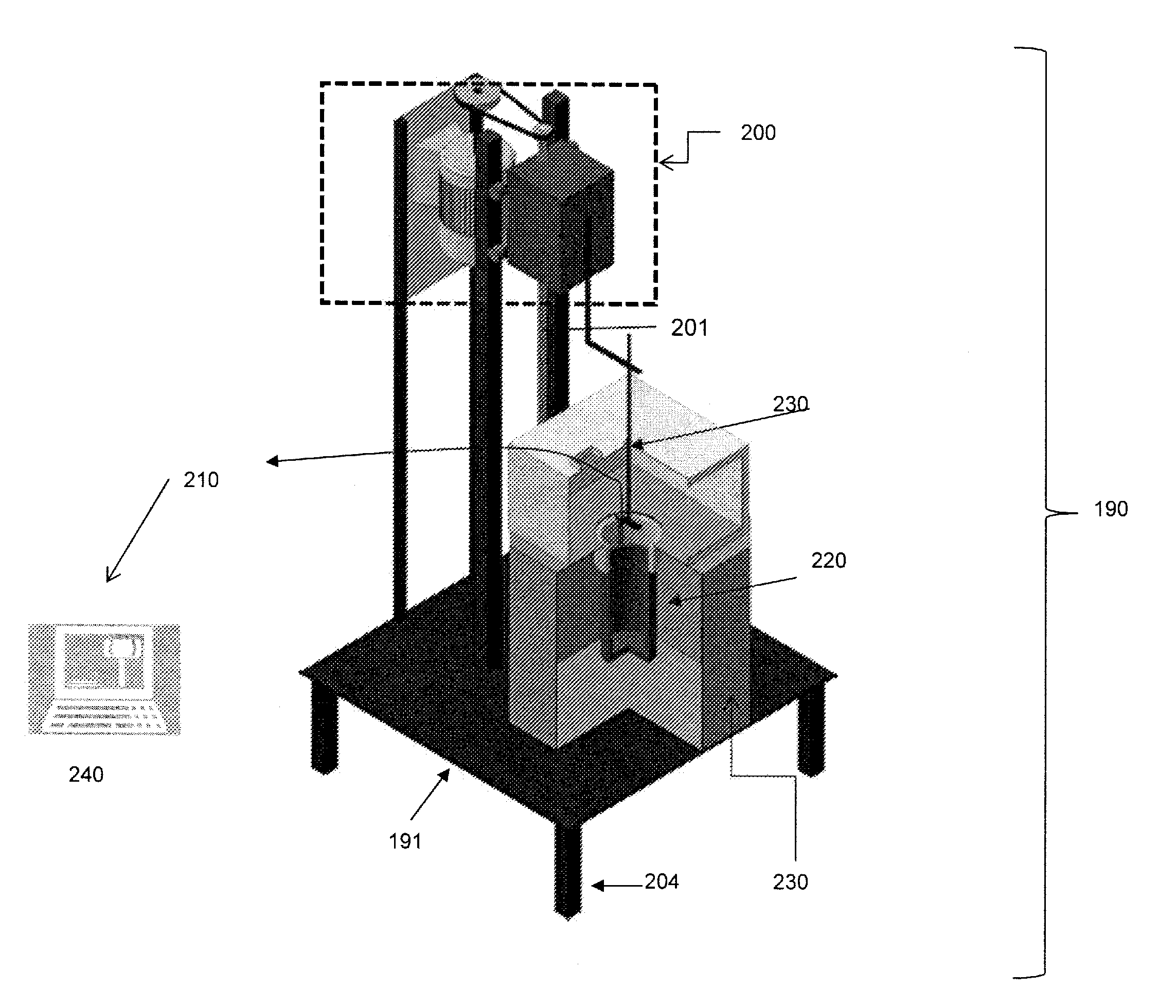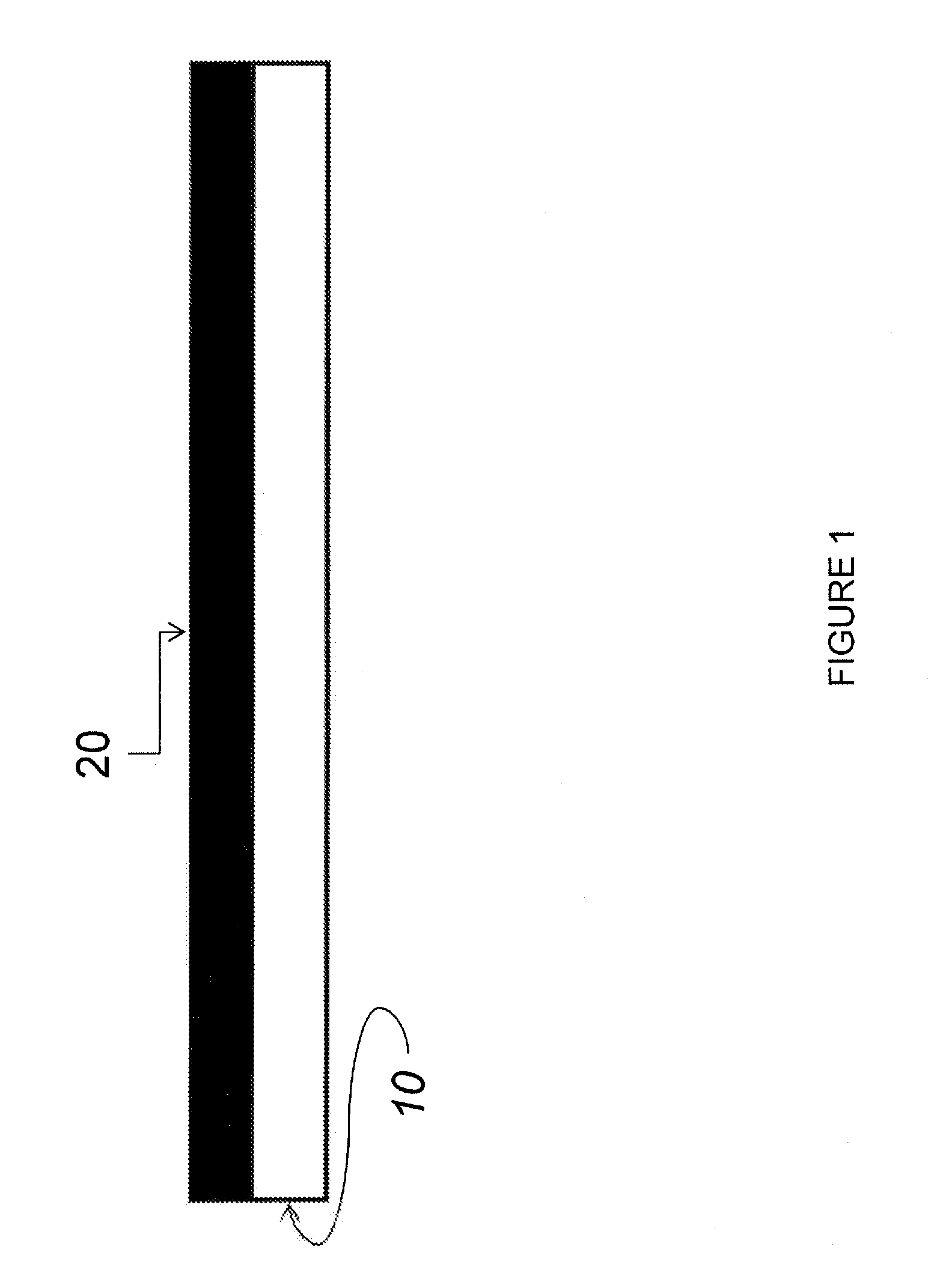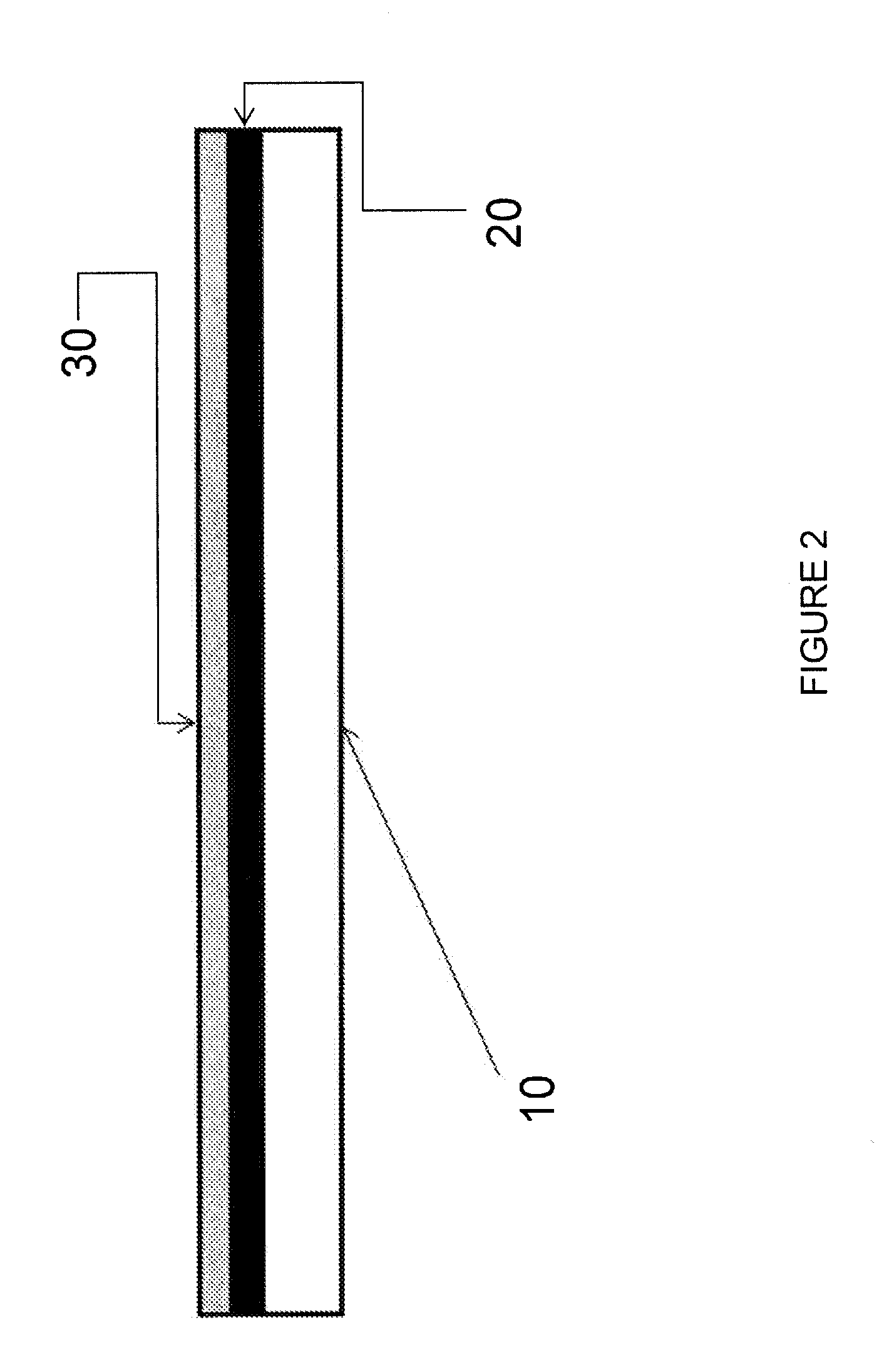Molten metal casting die
a technology of metal casting and metal die, which is applied in the direction of ceramic shaping equipment, coatings, coatings, etc., can solve the problems of insufficient tool steel molds and accessories used in aluminum die-casting process, inability to meet the needs of die-cast products, and lack of cheap and durable molds. , to achieve the effect of enhancing thermo mechanical endurance, cost-effectiveness, and reducing manufacturing steps
- Summary
- Abstract
- Description
- Claims
- Application Information
AI Technical Summary
Benefits of technology
Problems solved by technology
Method used
Image
Examples
example 1 (
Example 1(c)
[0053]The dispersed composite is a mixture of aluminum oxide, titanium oxide and a mixed oxide phase ⅓(50% ZrO2: 50% Y2O3) containing both ⅓Al2O3 and ⅓TiO2, thus giving rise to three phase composite mixtures.
[0054]In another embodiment, for example, a plasma sprayed structure, the mixed oxide can form in situ (on the substrate). This is when the two individual oxides are in a mechanically or physically mixed condition in a powder feeder. They are sent through a high energy, high velocity plasma, generated in a plasma spray nozzle. Under these deposition conditions one may obtain combinations of one ceramic with another ceramic. In other cases, pre reacted ZrO2 and Y2O3 containing 20 wt % Y2O3 is prepared as a single solid solution phase. It may then be spray coated onto the substrate. This second process known as stabilization of zirconium in general and yttrium stabilized zirconium in particular, is another example of the two ceramic oxides being spray coated in a plasm...
example 2 (
Example 2(b)
[0060]Pre-reacted Yttrium stabilized Zirconia (YST) with formula 20% Y2O3.ZrO2 is plasma coated.
Example 3(a)
[0061]A dispersed composite coating of multiple layers with ZrO2 stabilized with yttrium (Y2O3) additions which are sprayed in such a manner wherein the Y2O3 content is changed after few layers giving a graded composite coating (FIG. 5). Here the composite is not only due to variation of the composition or the ratio of ZrO2 and Y2O3, but also in spatial extent, as function of distance from the substrate surface.
example 3 (
Example 3(b)
[0062]A single layer metallic top coating such as NiCrAlY, NiCr, Co—Ni—Cr—W was used. This was done to reduce the cost further due to using a single layer and was based on the results obtained from the study of previous multilayer coatings.
TABLE IIH-13 Steel-Nickel alloy(Compositions are in weight percentage)ExampleComposition of LayerExample 4(a)(Ni—20Cr—10Al—1Y)—(Ni—20Cr)Example 4(b)(Ni—20Cr—10Al—1Y)—(Ni—20Cr—10Al—1Y)Example 4(c)(Ni—20Cr—10Al—1Y)—(Ni 20Cr)25Cr3C2
PUM
| Property | Measurement | Unit |
|---|---|---|
| Thickness | aaaaa | aaaaa |
| Thickness | aaaaa | aaaaa |
| Fraction | aaaaa | aaaaa |
Abstract
Description
Claims
Application Information
 Login to View More
Login to View More - R&D
- Intellectual Property
- Life Sciences
- Materials
- Tech Scout
- Unparalleled Data Quality
- Higher Quality Content
- 60% Fewer Hallucinations
Browse by: Latest US Patents, China's latest patents, Technical Efficacy Thesaurus, Application Domain, Technology Topic, Popular Technical Reports.
© 2025 PatSnap. All rights reserved.Legal|Privacy policy|Modern Slavery Act Transparency Statement|Sitemap|About US| Contact US: help@patsnap.com



